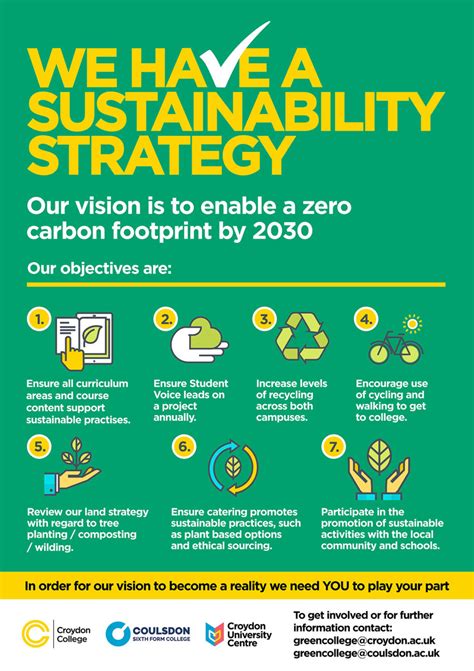In recent years, there has been a growing emphasis on sustainability in higher education, particularly when it comes to energy consumption and environmental impact. US universities have been at the forefront of implementing sustainable energy programs, with a focus on not only reducing their carbon footprint but also engaging and educating the campus community. In this blog post, we will explore the various strategies and approaches used by American higher education institutions to promote sustainability, including the funding and resources available for such initiatives. We will also delve into the partnerships and collaborations that have been crucial in driving sustainable energy solutions, and how the impact of these programs is being assessed. Additionally, we will take a look at some case studies of successful sustainable energy initiatives, as well as the latest innovations and technologies being used in this space. Finally, we will discuss the future directions for sustainable energy programs in US universities, and the training and education offered in this field. Join us as we take a deep dive into sustainability in action at US universities.
Table of Contents
Sustainability Initiatives in American Higher Education
American higher education institutions are increasingly recognizing the importance of sustainability initiatives in campus operations, curriculum, and research. The focus on sustainable practices has become a priority for colleges and universities across the country as they strive to reduce their environmental impact and educate the next generation of leaders in environmental stewardship.
One of the key aspects of sustainability initiatives in higher education is the implementation of energy-efficient technologies and renewable energy programs. By investing in sustainable energy solutions such as solar panels, wind turbines, and energy-efficient lighting, institutions can significantly reduce their carbon footprint and contribute to a cleaner and greener future.
In addition to implementing sustainable energy programs, colleges and universities are also focusing on engaging the campus community in sustainable energy initiatives. This includes raising awareness about energy conservation, organizing sustainability events, and providing educational opportunities for students, faculty, and staff to learn about green energy practices.
Furthermore, colleges and universities are seeking funding and resources to support their sustainable energy projects. This may involve seeking partnerships and collaborations with organizations that share their commitment to sustainability, as well as applying for grants and incentives offered by government agencies and private foundations.
Implementing Sustainable Energy Programs: Strategies and Approaches
Implementing sustainable energy programs in any organization requires careful planning and strategic approaches. One of the key strategies is to conduct a comprehensive energy audit to identify areas of inefficiency and potential for renewable energy sources. This audit can help in setting clear goals and targets for the organization’s energy consumption and carbon footprint reduction.
Another important approach is to engage with stakeholders from all levels of the organization, including students, faculty, staff, and administration. Building a culture of sustainability and creating awareness about the benefits of sustainable energy is crucial for the success of any energy program.
Furthermore, partnerships with local communities, utility providers, and government agencies can provide access to resources and incentives for implementing sustainable energy projects. Collaborative efforts can also help in leveraging expertise and technology for effective implementation.
Lastly, ongoing monitoring and evaluation of sustainable energy programs are essential to track progress, identify challenges, and make necessary adjustments. Regular reporting and communication about the impact of these programs can also create accountability and encourage continuous improvement.
Engaging the Campus Community in Sustainable Energy Initiatives
Engaging the Campus Community in Sustainable Energy Initiatives is an essential aspect of promoting environmental responsibility and reducing carbon footprint. By involving students, faculty, and staff in the development and implementation of sustainable energy programs, universities can create a culture of awareness and action towards environmental sustainability.
One effective strategy for engaging the campus community in sustainable energy initiatives is through education and outreach. Universities can organize workshops, seminars, and educational events to raise awareness about the importance of sustainable energy and the impact of carbon emissions on the environment. By providing information and resources, the campus community can be empowered to make informed decisions and take action towards energy conservation.
Another approach to engaging the campus community is through collaborative projects and initiatives. Universities can promote student-led sustainability groups, research projects, and campus-wide initiatives that focus on renewable energy and other sustainable practices. By fostering a sense of ownership and involvement, students and staff can work together to develop and implement innovative solutions to promote sustainable energy on campus.
Moreover, creating incentive programs and recognition for sustainable energy efforts can also engage the campus community. Universities can offer rewards, scholarships, or recognition for individuals or groups who contribute to sustainable energy initiatives. By incentivizing participation and innovation, the campus community is motivated to actively participate in sustainable energy programs and initiatives.
Funding and Resources for Sustainable Energy Projects
In order to support sustainable energy projects on college and university campuses, it is essential to have access to funding and resources. Without these essential elements, it can be challenging to implement new initiatives and maintain existing programs. This is why it is crucial for educational institutions to seek out various funding options and partnerships to support their sustainable energy goals.
One key source of funding for sustainable energy projects is through grants and sponsored research programs. Many federal and state agencies, as well as private foundations, offer funding opportunities for institutions looking to invest in renewable energy, energy efficiency, and other sustainable initiatives. By securing grant funding, universities can finance the construction of solar panels, wind turbines, or other alternative energy systems on campus.
Similarly, universities can also explore partnerships with private sector organizations and energy companies to support sustainable energy projects. These partnerships can provide access to both financial resources and technical expertise, helping institutions to develop and implement new energy programs. Businesses may also offer in-kind resources, such as equipment, materials, or professional services, to support sustainable energy initiatives.
Another important avenue for obtaining resources for sustainable energy projects is through internal investment and budget reallocation. By prioritizing sustainability within their financial planning, universities can allocate funds towards energy conservation measures and sustainability programs. This may involve dedicating a portion of the operating budget to support green initiatives or creating a designated fund for sustainable energy projects.
Partnerships and Collaboration for Sustainable Energy Solutions
Partnerships and collaboration are essential for achieving sustainable energy solutions in today’s world. By working together, different organizations and individuals can combine their resources, knowledge, and expertise to create innovative and effective energy initiatives. These partnerships can involve universities partnering with local government agencies, non-profit organizations teaming up with private businesses, or even international collaborations to address global energy challenges.
Developing strong partnerships and collaborations can lead to the sharing of best practices, access to additional funding sources, and the ability to leverage each other’s strengths. For example, a university may bring research and academic expertise to the table, while a corporation can provide financial resources and real-world implementation experience. By combining these strengths, sustainable energy projects can be more impactful and successful.
One key aspect of partnerships and collaboration for sustainable energy solutions is the ability to engage a diverse range of stakeholders. By involving various groups such as students, faculty, staff, community members, and industry leaders, energy initiatives can benefit from a wide range of perspectives and ideas. This inclusive approach not only leads to stronger solutions but also ensures that the entire community is invested in the success of the projects.
Ultimately, partnerships and collaboration are crucial for advancing sustainable energy solutions and addressing the complex challenges of climate change and environmental sustainability. By working together, organizations and individuals can make significant strides towards a cleaner, greener, and more sustainable future.
Assessing the Impact of Sustainable Energy Programs
Assessing the impact of sustainable energy programs is crucial to understanding their effectiveness and identifying areas for improvement. By conducting thorough evaluations, institutions can gain valuable insights into the outcomes of their initiatives and make informed decisions about future strategies. This process involves measuring the environmental, economic, and social impacts of sustainable energy efforts, as well as gauging the level of community engagement and behavior change.
One key aspect of assessing impact is the quantification of energy savings and carbon emissions reductions. By analyzing energy consumption data and comparing it to pre-intervention levels, institutions can determine the extent to which their programs have contributed to energy efficiency and reduced greenhouse gas emissions. This information not only demonstrates the tangible benefits of sustainable energy initiatives but also helps in setting targets for future improvements.
In addition to quantitative metrics, qualitative assessments are essential for understanding the broader implications of sustainable energy programs. Surveys, interviews, and focus groups can provide insights into how these initiatives have influenced the attitudes and behaviors of students, faculty, and staff. These findings can inform the development of new engagement strategies and generate support for further sustainable energy efforts.
Overall, the process of assessing impact serves as a valuable tool for continuous improvement and accountability in sustainable energy efforts. It allows institutions to demonstrate the benefits of their programs, identify areas for enhancement, and communicate their achievements to stakeholders and the wider community.
Case Studies: Successful Sustainable Energy Initiatives
In recent years, there has been a growing emphasis on sustainable energy initiatives within higher education institutions across the United States. These initiatives aim to reduce energy consumption, minimize environmental impact, and promote a culture of sustainability on campus.
One successful case study is the University of California, Berkeley, which implemented a comprehensive sustainable energy program that resulted in a significant reduction in carbon emissions and energy costs. Through the use of renewable energy sources and energy-efficient technologies, UC Berkeley was able to achieve its sustainability goals while also saving money.
Another noteworthy example is Arizona State University, which established a campus-wide sustainable energy initiative that involved the adoption of solar power and energy-efficient building designs. This initiative not only reduced the university’s environmental footprint but also provided valuable educational opportunities for students and faculty.
Furthermore, the University of Massachusetts Amherst implemented a successful sustainable energy initiative that focused on energy conservation, renewable energy, and carbon neutrality. By engaging the campus community and investing in innovative technologies, UMass Amherst was able to achieve its sustainability goals and serve as a model for other institutions.
Innovations and Technologies in Sustainable Energy
In today’s rapidly changing world, innovations and technologies play a crucial role in driving sustainable energy initiatives. From the development of groundbreaking renewable energy technologies to the implementation of smart grid systems, there are numerous ways in which technology is revolutionizing the way we produce and consume energy.
One of the most exciting innovations in sustainable energy is the advent of advanced energy storage solutions. With the ability to store excess energy generated from renewable sources such as wind and solar power, these storage technologies are helping to address one of the biggest challenges in the transition to a renewables-based energy system: intermittency.
Furthermore, the emergence of smart grid technology is transforming the way we distribute and manage energy. By leveraging data analytics and automation, smart grid systems are enabling more efficient and reliable energy distribution, while also facilitating the integration of decentralized renewable energy sources into the grid.
Another area of technological innovation that is making significant strides in sustainable energy is the development of next-generation solar panels and wind turbines. These new technologies are not only more efficient at converting sunlight and wind into electricity, but they are also becoming more affordable, making renewable energy more accessible to a wider range of consumers.
Training and Education in Sustainable Energy
When it comes to sustainable energy programs, education and training play a crucial role in shaping the future of the industry. Universities in the US are at the forefront of providing the necessary knowledge and skills for students to become leaders in the field of sustainable energy. Through specialized courses, research opportunities, and hands-on experiences, students are equipped with the tools needed to tackle the challenges of renewable energy and environmental sustainability.
One of the key aspects of training and education in sustainable energy is the focus on interdisciplinary learning. Students have the opportunity to explore various disciplines such as engineering, environmental science, policy development, and economics. This holistic approach enables them to understand the complexities of energy systems and develop innovative solutions that consider social, economic, and environmental factors.
Moreover, training and education in sustainable energy also involves industry partnerships and internships. Universities collaborate with energy companies and organizations to provide real-world experiences for students. This hands-on learning approach allows students to apply their knowledge in practical settings and gain valuable insights into the renewable energy industry.
As the demand for skilled professionals in the sustainable energy sector continues to grow, universities are adapting their training and education programs to meet industry needs. By staying abreast of the latest innovations and technologies, as well as fostering a culture of research and development, universities are shaping the next generation of leaders who will drive sustainable energy initiatives forward.
Future Directions for Sustainable Energy Programs in US Universities
In recent years, the focus on sustainable energy has become increasingly important in various sectors, including higher education. As universities strive to reduce their carbon footprint and contribute to global efforts to combat climate change, the need for sustainable energy programs in US universities has never been more pressing. Going forward, there are several key future directions that will shape the landscape of sustainable energy programs in higher education.
One of the key future directions for sustainable energy programs in US universities is the expansion of renewable energy sources on campus. This can include the installation of solar panels, wind turbines, and other forms of renewable energy infrastructure. By investing in and utilizing renewable energy sources, universities can significantly reduce their carbon emissions and reliance on fossil fuels.
Another important future direction for sustainable energy programs in US universities is the integration of smart grid technology. Smart grid technology allows for more efficient energy distribution and management, enabling universities to optimize their energy usage and reduce waste. By implementing smart grid systems, universities can further enhance their sustainability efforts and drive down energy costs.
Additionally, a crucial future direction for sustainable energy programs in US universities is the continued advancement of energy efficiency measures. This can involve the retrofitting of existing buildings with energy-efficient systems, as well as the construction of new, environmentally friendly buildings. By prioritizing energy efficiency, universities can minimize their environmental impact and create a healthier, more sustainable campus environment for students, faculty, and staff.






